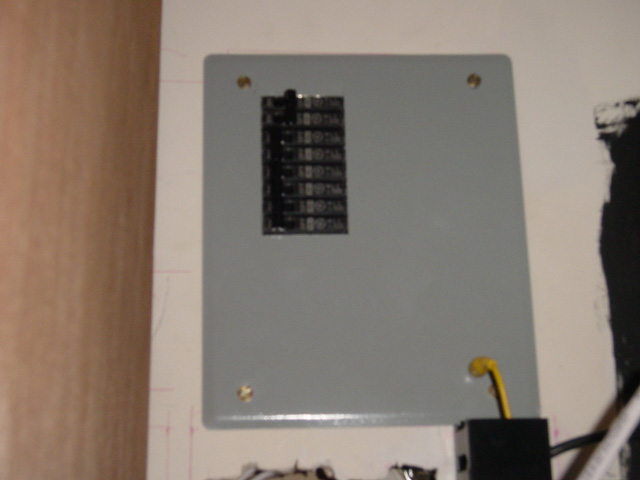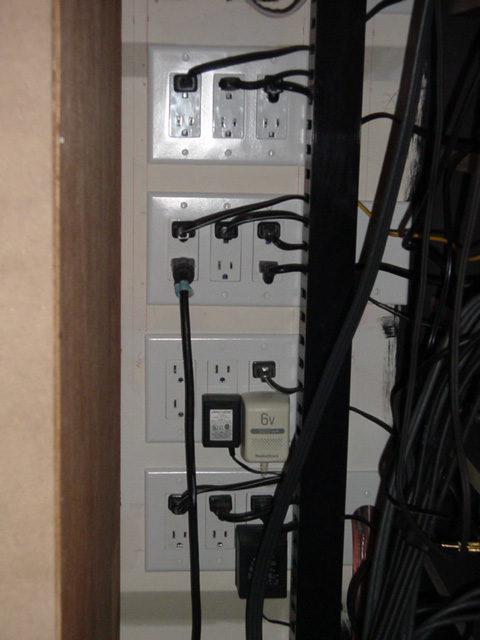I thought I already posted in here, but I guess I didn't.
In my HT, I have a typical 4-sp/8-ckt 120/240v sub-panel on a 50a 2p breaker and 6-3 NM from my main panel, and all wired as usual. I used all 15a tandem breakers and 14-2 for all circuits.
The distribution is as follows:
1A Future lighting (or etc.)
1B Future lighting (or etc.)
2A Unswitched electronics
2B Switched electronics
3A Sub-woofer amp receptacles
3B CRT projector receptacle
4A Stereo amp (main spkrs)
4B 5-ch amp (ctr, sides, rears)
By "switched" and "unswitched" electronics, the preamp/processor has 12v trigger outputs, one of which triggers a 4p contactor in the panel, which switches circuits 2B, 3A, 4A, and 4B.
I even have 120v in NM, speaker wires, and shielded cables for the sub amps, all fished in each wall-stud bay to supply the speakers with power, bi-wired mids and tweeters, and lows, respectively.
So, while the source electronics are all on one phase, the sub amps (and projector) are on the other, but, the entire system is dead quiet with no signal, and there is no video noise, either.
Maybe I'm just lucky, but I just wired as normal, I use good-quality audio and video cabling, and keep the power cords at right angles to the rest on the shelves, and bundled vertically.
Here are a couple of pix:
I'm expecting a question or two, so let 'er rip.




